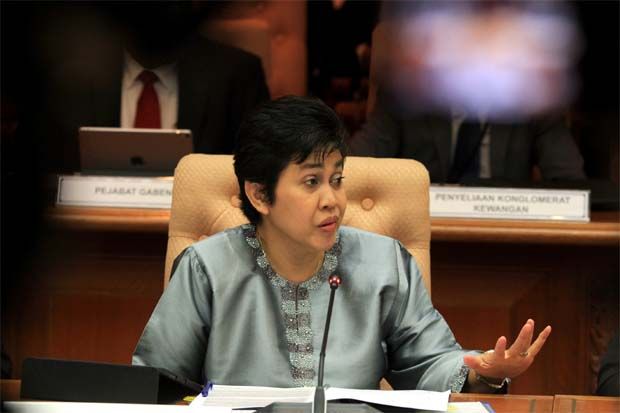February 7, 2022
KUALA LUMPUR – While some advanced economies are experiencing multi-year-high inflation amid supply chain disruptions and high fuel prices, Malaysia’s inflation should remain within range, supported by price control mechanisms and a balanced supply-demand dynamics.
Nonetheless, economists expect the consumer price index (CPI) to trend higher in the first few months of the year to reflect higher food and fuel prices before easing lower.
Malaysia’s inflation, as measured by the CPI, had increased 3.2% in December 2021 from a year earlier. This is mainly due to the rise in food and fuel prices and a low base effect.
The annual inflation rate in 2021 showed an increase of 2.5% compared to -1.2% in 2020.
Affin Hwang Asset Management senior director of fixed income Esther Teo expects Malaysia’s headline inflation to average 2%-3% in 2022 and core inflation to remain manageable at 2% from 1% in 2021.
“Globally, headline inflation has been creeping up due to global inflationary pressures like supply chain bottlenecks and higher fuel prices, but inflation in most Asian countries such as Indonesia, Malaysia and Thailand has remained below or in line with their central bank’s inflation target range.
“This is in stark contrast to developed nations like the United States and the United Kingdom and other emerging economies in Latin America, which have seen their headline inflation hit multi-year highs.
“A delay in economic recovery (here) has kept core inflation – which excludes food and energy costs – lower than other regions,” she told StarBiz.

Bloomberg reported that Bank Negara had signalled it was not yet ready to withdraw policy support as the economy recovers, steering clear of the hawkish pivot undertaken by major central banks amid rising inflation.
She also noted that the region has a more muted energy inflation than in advanced economies.
Although oil prices are expected to stay elevated for most of 2022 due to pent-up demand and the ongoing geopolitical tensions in Europe, demand may slow down as the economic growth outlook moderates later in the year from a high base in 2021.
As such, oil prices should trend down towards the end of the year or in early 2023 and the supply-demand dynamics should improve as Malaysia heads toward the end of the pandemic.
Teo believes inflation is likely to peak in the first quarter of 2022.
“A lot of the rise in oil prices in 2021 – oil price rose sharply by 50% from US$55 (RM229.87) to US$80 (RM334.36) – have been factored into the recent inflation prints.
“Given our expectation that Brent crude oil prices will range between US$80-US$100 (RM334.36-RM417.95) per barrel this year, the impact of oil prices on inflation for 2022 will be more muted compared to last year,” she said.
Incidentally, MARC Ratings chief economist Firdaos Rosli pointed out that as long as retail oil prices, in particular RON95, remain as is, there shouldn’t be a big spike in core inflation.
“Inflationary pressures would sip in through higher diesel and RON97 prices, but it would not make a big dent in headline inflation as much.
“Besides, the government would also be likely to resort to price controls, easing import restrictions and subsidies to tame inflation as we inch closer to the 15th general elections,” he said.
That said, inflationary pressures may persist for longer as producers experience margin squeeze amid rising production costs.

MARC Ratings chief economist Firdaos Rosli pointed out that as long as retail oil prices, in particular RON95, remain as is, there shouldn’t be a big spike in core inflation.
Firdaos opined that producers will inevitably transfer the higher input prices to consumers, although the rate of this increase in the coming months will need to be monitored.
“As the economy reopens, the services sector would gradually recover in time, which we think could push prices somewhat higher amid rising producer prices.
“We see that inflationary pressure is mainly skewed towards the supply side, so prices would also move higher as demand picks up.
“Core inflation has been rising steadily over the past months, but it is not at a level that necessitates a knee-jerk policy reaction,” he added.
Firdaos also noted that there is not much else that can be done in the immediate term to ease inflation worries apart from price controls and subsidies. Besides, prices would take time to adjust to major policy changes.
Hence, he thinks existing measures should do the trick, for now.
However, he said the time was ripe for the government to relook at the effectiveness of price controls and whether they are still relevant and effective today.
Additionally, the government should look at trade liberalisation as a means to ease rising prices in the medium to long term.
“The recently ratified Regional Comprehensive Economic Partnership (RCEP) should smoothen trade among member countries to some extent.
“We think the government should also proceed with ratifying the Comprehensive and Progressive Trans-Pacific Partnership, which is only one or two notches higher in quality than the RCEP,” he said.
Meanwhile, Bloomberg reported that Bank Negara had signalled it was not yet ready to withdraw policy support as the economy recovers, steering clear of the hawkish pivot undertaken by major central banks amid rising inflation.
The newswire reported the central bank governor Tan Sri Nor Shamsiah Mohd Yunus as saying the current policy stance was “appropriate and accommodative” and any adjustment would be data-dependent.
Headline inflation is expected to remain moderate in 2022 and the economy likely achieved the official growth target of 3% to 4% last year, Nor Shamsiah said in an email interview with Bloomberg.
“Going forward, the domestic economy is projected to gradually recover amid modest price pressures,” she said.
“Given the prevailing uncertainties surrounding the pandemic and supply chain disruptions, among others, the Monetary Policy Committee remains mindful of avoiding a premature withdrawal of policy support that could derail the economic recovery.”
Malaysian policymakers are seeking to strike a balance between reining in quickening price pressures and reviving an economy that’s been hit by virus curbs.
An accommodative stance risks narrowing the nation’s yield premium over the US and triggering capital outflows.
According to Bloomberg, Nor Shamsiah said Malaysia’s policy stance is premised on the achievement of price stability and sustainable growth, signalling that the central bank may not move in lock-step with major peers such as the Federal Reserve.
“While we remain vigilant of the potential tightening in global financial conditions, this is not expected to significantly affect the overall transmission mechanism and degree of domestic monetary accommodation, given the more dominant role of domestic-based financing for the Malaysian economy,” she said.
Interest-rate swaps indicate that traders are pricing in about 60 basis points of hikes from the Malaysian authority over the next 12 months.
On the ringgit’s performance, Nor Shamsiah said the currency’s depreciation versus the US dollar in 2021 was in line with the weakening of other major and regional currencies.
“It is important the adjustments in the exchange rate continue to be determined by the market and in an orderly manner,” she told Bloomberg.
“I want to stress that the bank conducts two-way foreign exchange intervention operations to manage excessive volatility and ensure sufficient liquidity and not to target the ringgit at any specific level.”
Malaysia’s currency declined 3.5% last year in the biggest annual drop since 2016 as the greenback strengthened on bets for a withdrawal of US stimulus.
The median forecast in a Bloomberg survey of analysts is for the ringgit to strengthen to 4.14 by year-end from around 4.18 now.
Bank Negara has held rates steady since July 2020 as it looks to cement a recovery that’s being threatened by a recent wave of flash floods and rising Omicron cases.
A report due on Feb 11 is forecast to show that the economy grew 3.1% in the December quarter from a year earlier, after contracting 4.5% in the previous three months.

